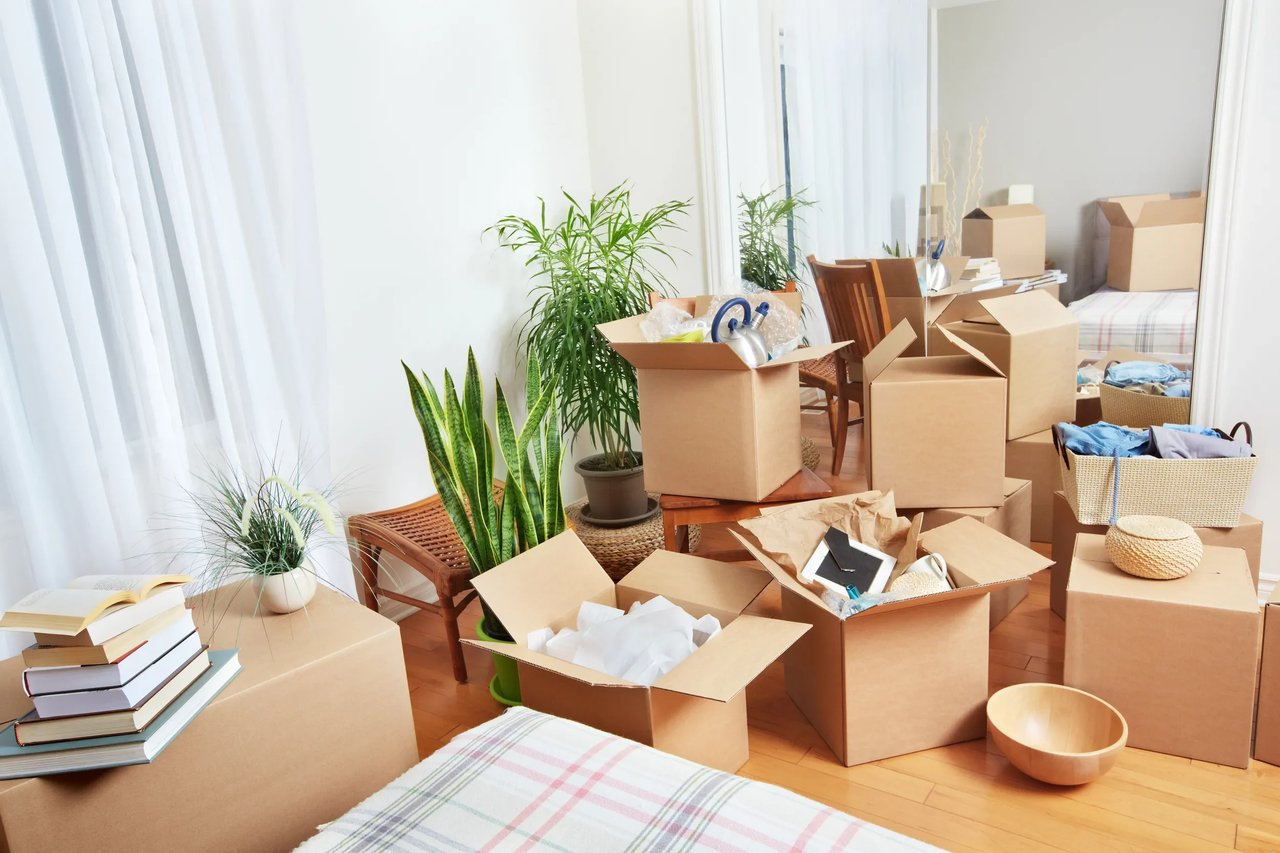Moving—like getting a tooth pulled or driving a very long distance through uninteresting landscapes—is one of those trials almost everyone must face. It's sometimes unpleasant, it's never exactly fun, but it usually leads to a positive outcome. Of course, particularly with moving, the success of the endeavor really depends on avoiding moving mistakes and planning ahead to make the process as smooth as possible.
Prep Ahead
Fortunately, and likely because almost everyone does end up moving at some point, there are plenty of tried-and-true moving tips out there to make the whole process easier. Following a moving checklist can help you make sure everything's in order before, during, and after the move; another good moving tip is to commit to having a good attitude about all the change to come.
Some moving tips focus on how to pack a moving truck most effectively, while others offer reminders to cancel various services or arrange for things to be prepared at the new house; still more focus on smaller details, such as how to care for pets during a move or what to do when the movers are late. The most important moving tips, though, may relate to the physical move itself.
A lot can go wrong during a move. With all the details and moving parts, there's no one-size-fits-all guide with moving tips for every single scenario that could come up during the moving process. Different people will have specific needs or concerns—such as how to pack china for moving, safely moving valuable wood furniture or delicate heirlooms—but for most cases, this general list of moving tips and tricks will help. Take a look, and prepare for a smoother, quicker, easier move.
Moving Tips, Tricks, and Advice
1. Get rid of some stuff
Packing all your possessions into boxes, bags, and more can be overwhelming. Make it a little bit easier on yourself by cutting back on clutter as much as possible. Before you pack a single box, do a merciless purge of unused or unnecessary items. You'll have less to pack, less to move, and less to unpack—and you'll start life in your new space with a clean slate.
2. Make a moving folder
Start collecting new address info, rental or purchase papers, moving contracts, and more in one folder. (Consider a hard copy, rather than a digital one, in case computer or phone batteries die during the move.) If any questions come up during the planning process or the move itself, you'll have the answer (and records of agreements, payments, and more) on hand.
3. Pack as far in advance as possible
Ideally, you'll know about a move (even if you're not sure of the final destination) weeks or even months in advance. Start by packing off-season items and the items you won't miss. If you're moving in summer, you can pack winter coats in advance—and likely books and other once-in-a-while items. When it's finally time to move, many items will already be ready to go, giving you less to stress about.
4. Book early
If you're hiring moving services, renting supplies, or hiring professionals such as painters or cleaners to work on the house, book early. Waiting to do so could mean paying a higher price, or not being able to get a truck or movers at all, particularly if it's peak moving season.
5. Schedule utilities for your new place
Once the dates are finalized, contact your utility providers to schedule service at your new home. You don't want to arrive there, tired from the move, only to find that the electricity, water, or heat is off. Schedule it ahead of time, and keep records of your requests in your moving folder. At the same time, request service stops for your move-out date at your current home.
6. Keep the essentials with you
On the night before the move, tuck everyday essentials—a change of clothes, a toothbrush, must-have stuffed animals or toys for the kids, medications, paperwork, etc.—into a suitcase or bag you'll keep with you in the car, the truck cab, or on the plane. If catastrophe strikes and the moving truck gets lost, at least you'll have some essentials with you.
7. Invest in equipment
A few days before the big move, stock up on supplies. The last thing you want is to have to make a run to the store while you're packing moving boxes or making sure everything is out of the house. Order or purchase box cutters, adhesive bandages, permanent markers, packing tape, paper towels, and garbage bags. (If they aren't all used during the move, they'll still be useful afterward!)
For larger moving equipment, considering renting moving tools from a moving company. (If you hire a moving service, they'll likely have their own.) If you move very frequently, you may be better off purchasing these tools. Either by buying, renting, or borrowing, make sure you have a furniture dolly, furniture pads or covers, and tie-down straps or rope at your disposal during the move.
8. Get a truck with a loading ramp
If you're a DIY mover, you absolutely need a truck with a ramp. It may be cheaper to rent a truck without one, but the hassle (and struggle) of lifting every box and piece of furniture high enough to get it into the truck will add hours—plus sore muscles—to your move.
9. Measure, measure, measure
We can't say this enough! Take measurements! Ahead of time! Because if that sofa isn't going to fit through the doorway, it's better to know before the sofa gets there.
10. Snap lots of pics
No, not of your sweaty face—of your old and new place. If there's a security deposit involved, you're going to want photos to prove how you left things and what things were like when you moved in. And sure, you can use them for reminiscing too, if you'd like!
11. Unpack on a deadline
This will not be a process with instant gratification, but consider giving yourself a timeline. Maybe you can do five boxes a day? Or two rooms in a day? Or all the essentials right away? Decide what's realistic and do your best to stick to it.
12. Deal with all those packing supplies
As you unpack, you're going to find yourself with lots of empty boxes and bubble wrap and paper and whatnot. And all of it will junk up your space while you're trying to set it up. Your local library will likely be interested in taking the boxes off your hands. Or you can take to social media (Facebook Marketplace or NextDoor, for example) to see if anyone near you has a move coming up. Chances are, someone will be happy to take these things out of your hands—and out of your way.
Packing Tips for Moving
1. Use the right size boxes
When you pack books for moving, pack them or other heavy items in small boxes; light items, like linens and pillows, can be packed in bigger ones. (Large boxes packed with heavy items are a common complaint of professional movers. They not only make the job harder but also have a better chance of breaking.)
2. And suitcases
Any suitcases you own can (and should!) be put to work. Wheeled luggage can hold heavier items, while weekend bags and carry-ons can be stuffed with pillows, blankets, linens, or clothes. Your hamper and laundry baskets can be filled too.
3. Put heavier items on the bottoms of boxes, lighter items on top
And if you're loading the truck yourself, pack your heaviest boxes first, toward the front of the truck, for balance.
4. Don't leave empty spaces in the boxes
Fill in gaps with clothing, towels, or packing paper. Movers often won't move boxes that feel loosely packed or unbalanced.
5. Avoid mixing items from different rooms in the same box
It will make your packing quicker and your unpacking a lot easier, too.
6. Label each box with the room it's destined for and a description of its contents
This will help you and your movers know where every box belongs in your new place. Numbering each box and keeping an inventory list in a small notebook is a good way to keep track of what you've packed―and to make sure you still have everything when you unpack.
7. Tape your moving boxes well
Use a couple of pieces of tape to close the bottom and top seams, then use one of the movers' techniques―making a couple of wraps all the way around the box's top and bottom edges, where stress is concentrated.
8. If you're moving expensive art, ask your mover about special crating
Understand exactly how to pack artwork for moving to help keep it safe. You should never wrap oil paintings in regular paper; it will stick. When you pack pictures for moving, make an X with masking tape across the glass to strengthen it and to hold it together if it shatters. Then wrap the pictures in paper or bubble wrap and put them in a frame box, with a piece of cardboard between each framed piece for protection.
9. Take special care packing the kitchen for moving
Packing the kitchen involves a lot of different types of items. Learn how pack dishes for moving: Put packing paper around each dish, then wrap bundles of five or six together with more paper. Pack dishes on their sides, never flat. And use plenty of bunched-up paper as padding above and below. Cups and bowls can be packed inside one another, with paper in between, and wrapped three or four in a bundle. Pack them all in dish-barrel boxes.
When you pack glasses for moving, use a box with cardboard dividers to help protect the glasses, and wrap them in plenty of layers of paper to protect them.
10. Grab a cooler
If your move is local-ish and you've got stuff in the fridge and freezer, a cooler is your best bet for getting things from point A to point B. Ideally, you'll do your best to eat down the contents in the weeks leading up to the move, but anything that's left can be packed at the last minute and unpacked right away. As for pantry items, pack them up together and tape open bottles around the caps to prevent leaks.
11. Get your wardrobe in order
There are a few different options to pack clothes for moving—you can pack folded clothes in cardboard boxes, suitcases, or even leave them in the dresser (if it doesn't make the dresser too heavy to move!). For hanging clothes, use a special wardrobe box, so you can hang your clothes right in it. (Bonus: you won't have to worry about figuring out how to pack your hangers for moving!)
You need to protect your shoes from each other when you pack shoes for moving. Wrap shoes individually to keep sharp heels or buckles from damaging other shoes, and to keep dirt from one pair of shoes from messing up the rest of your shoes. You can pack socks into shoes to help them hold their shape.
When you pack jewelry, you can recycle some items to help you—you can string necklaces through straws or toilet paper rolls to keep them from being tangled.
12. Learn how to pack a TV for moving
Some movers treat TVs like any other piece of furniture, wrapping them in quilted furniture pads. Plasma TVs, though, require special wooden crates for shipping if you don't have the original box and can be ruined if you lay them flat. If you're packing yourself, double-box your TV, setting the box containing the TV into another box that you've padded with packing paper.
13. Wrap big or valuable furniture
Professional movers will bring blankets and tape for pretty much everything. If there's anything you definitely want wrapped, make sure to tell them just in case. If you're moving yourself, use your rattiest blankets (they might get dirty) or see if you can rent some from a local moving company. Throw a blanket over that marble-topped coffee table, tape it up, and then carefully get it out the door.
Article courtesy of RealSimple.com




